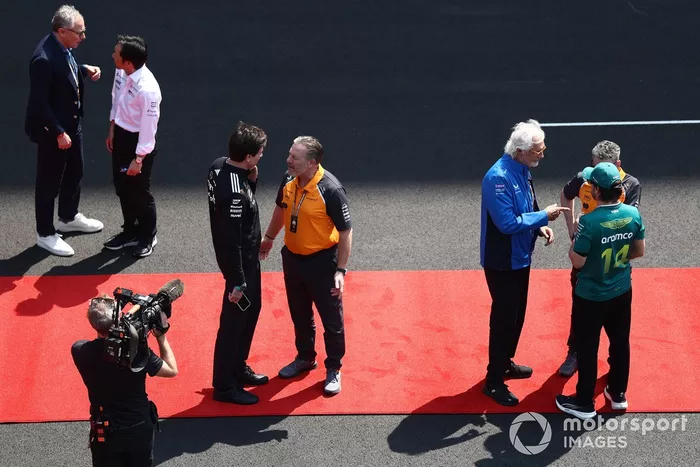Views: 72
A pivotal meeting in Bahrain has revealed the deep divisions and high-stakes politics behind Formula 1’s upcoming 2026 engine regulations. As manufacturers, the FIA, and teams debated the future of power units, one thing became clear: the path forward is anything but unanimous.
Future-Proofing Formula 1: What Happens After 2031?
Following a revealing media session in China with Nikolas Tombazis, head of the FIA’s single-seater commission, two fundamental questions have dominated the conversation:
-
What is the long-term vision for F1 engines — possibly a return to V10s with sustainable fuel?
-
If so, should the 2026 hybrid rules be shortened or scrapped entirely?
The FIA floated both options publicly, but the immediate response in Bahrain was firm. According to sources, Audi, Honda, and Mercedes all pushed back hard on scrapping the incoming 2026 regulations — a move requiring a supermajority to even be considered.
Mercedes CEO Ola Källenius, joining virtually, reiterated: “F1 must remain a reliable partner. Last-minute changes don’t reflect that.”
The outcome? Scrapping the rules is off the table, as unanimity among manufacturers is simply not there. As Tombazis emphasized, “broad consensus” is non-negotiable.
Electric or Exciting? Debating the Soul of F1’s Next Era
While V10s or V8s paired with KERS continue to excite fans and some teams, they pose significant technical and sustainability challenges. KERS systems are heavy, fuel demands increase, and road relevance declines — a dealbreaker for OEMs like Audi.
“A degree of electrification will always be part of future considerations,” the FIA affirmed, prioritizing sustainability, road car relevance, and sound in its future engine discussions.
Still, concerns around turbochargers persist. Esteban Ocon lamented the lack of classic engine sounds, saying:
“The turbo takes the sound away. Even a three-cylinder without a turbo would sound better!”
2026: A Rulebook Under Fire
Despite being just a season away, the 2026 regulations remain controversial. Drivers and teams have expressed growing concern — particularly regarding the predicted racing dynamics and engine-to-electric ratio.
Carlos Sainz stated bluntly:
“If I liked what I saw from 2026, I wouldn’t be calling for a V10 comeback.”
Behind closed doors, there’s also widespread fear that one manufacturer could dominate the new era, similar to Mercedes’ 2014 power unit breakthrough.
To address this, the FIA is exploring performance balancing tools — not via token systems, but with extra dyno time and increased development flexibility under the budget cap for underperforming teams.
Still, Red Bull has sounded the loudest alarm over potential flaws in the electric/ICE balance. Christian Horner warned of races dominated by “lifting and coasting,” saying:
“The FIA’s research shows this could be bad for racing and frustrating for drivers. We didn’t push for this review — the FIA did.”
Meanwhile, Mercedes boss Toto Wolff dismissed such concerns:
“It’s laughable to adjust the rules this late. It’s like reading American political satire.”
The Bigger Picture: Image, Integrity, and Audience Trust
McLaren’s Andrea Stella cautioned against undermining fan confidence before 2026 even begins:
“Let’s be responsible stakeholders. Don’t damage the product before it’s on the track. Let’s collaborate and refine — not prematurely reject.”
Ultimately, this is more than just an engine debate. It’s a philosophical showdown over what Formula 1 should be — an entertainment product, a sustainability showcase, or a high-tech arms race?
As 2026 looms, F1 finds itself at a crossroads: the desire to innovate must be balanced with the sport’s identity — and its fans.
Key Takeaways
-
Scrapping 2026 rules is off the table due to manufacturer opposition.
-
Electrification remains central to future F1 engine discussions.
-
Concerns about racing quality and engine parity dominate the 2026 debate.
-
FIA may introduce balancing tools to prevent domination by a single manufacturer.
-
The political divide between Mercedes and Red Bull deepens as each defends its 2026 position.

